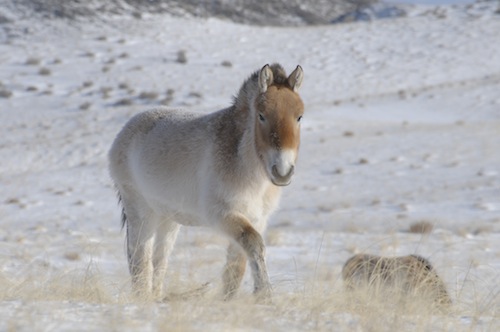 San Francisco is in the midst of a heat wave this week, and the ability to walk the summer streets without a parka is having a regrettable effect on our workforce. For once, the shorts-sporting tourists are properly dressed, and office workers are lingering alongside them on the downtown sidewalks, noticing that it actually feels more pleasant to be outside than in.
San Francisco is in the midst of a heat wave this week, and the ability to walk the summer streets without a parka is having a regrettable effect on our workforce. For once, the shorts-sporting tourists are properly dressed, and office workers are lingering alongside them on the downtown sidewalks, noticing that it actually feels more pleasant to be outside than in.
But the havoc that heat plays on our productivity is nothing compared to its catastrophic effects on DNA. Which is why, last week, when researchers announced that they had sequenced the oldest-ever genome of a living thing, scientists were almost blase about the feat. The genome in question came from a horse that was at least half a million years old, whose bones were found sticking out of the frozen Arctic ground in Canada’s Yukon Territory. Freezing DNA is the best way to protect it from decay, so to scientists in the ancient DNA field, sequencing the genome of very old, cold things is no longer all that noteworthy.
“Once things are frozen, it’s just a matter of finding something deeper and colder. It’s not particularly surprising,” Alan Cooper, director of the University of Adelaide’s Australian Center for Ancient DNA, told me about the horse genome. Noting last year’s publication of the genome of a 100,000-year-old frozen polar bear, Cooper said, “When the polar bear genome was published, the writing on the wall was pretty clear.”
So what would it take to raise eyebrows in the ancient DNA field? Not one genome, but a whole herd of them. The researchers who published the horse genome deduced some fascinating findings about horse evolution – for instance, that the horse lineage goes back in time 4 million years, about twice as long as previously estimated. But they could have looked at evolution in even more depth if they had sampled many horses instead of just one, because with more individuals to analyze, they could take a representative sample of genetic traits common to ancient horses as a group, and not potentially unique to one animal.
Cooper is pursuing that path. He’s trying to assemble ancient genomes of many bison instead of singletons.
Another feat that would really knock the socks off an ancient DNA specialist would be to publish older genomes from unfrozen samples. The oldest human ancestor ever sequenced was 80,000 years old, so there are huge swathes of human history to be explored. But ancient humans didn’t live in the kind of inhospitably cold environments that hairy beasts like mammoths, bears and horses once inhabited. So how far can researchers push the technology? Could it be used on unfrozen samples that are many hundreds of thousands of years old?
That might open up the possibility of sequencing human ancestors, such as Homo heidelbergensis, who lived long ago in continental Europe. Researchers would love to use this technique to try to answer questions that have been difficult to answer by examining bones alone. Questions like, what genetic adaptations allowed humans to flourish as a species? “Maybe we could reach these times with this new technology. That would be at the cutting edge,” said paleogeneticist Carles Lalueza-Fox of the Institute of Evolutionary Biology in Barcelona, Spain.
If heidelbergensis had lived in San Francisco’s Financial District, perhaps we would never have had to guess. Mark Twain once said, “The coldest winter I ever spent was a summer in San Francisco.” It’s just possible that the icy wind whipping between the skyscrapers would have preserved ancient DNA even better than the Arctic permafrost.
***
Image of a Przewalski’s horse frolicking in Western Mongolia at -47 degrees Fahrenheit, credit: Claudia Feh, Association pour le cheval de Przewalski.
One thought on “A half-million-year-old horse? Yawn. Show me a warm summer day in San Francisco.”
Comments are closed.